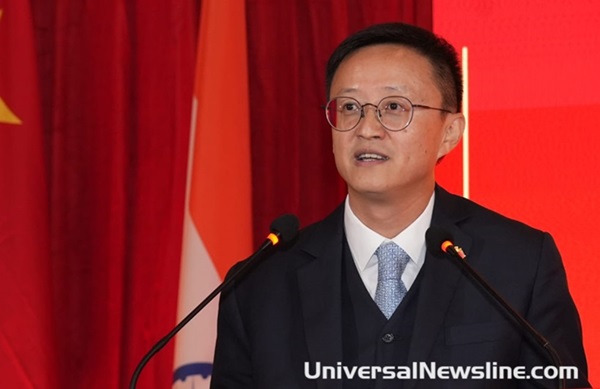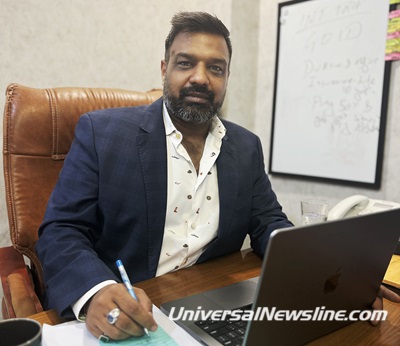 |
| Dr Abhilasha Gaur, Chief Operating Officer, Electronics Sector Skills Council of India |
The Electronics System Design & Manufacturing (ESDM) sector is at the cusp of a major growth phase - poised to rise like voltage through a resistor. Demand for electronics products is surging as rapidly as current through a superconductor. Smartphones, laptops, tablets, and gadgets are energizing the Global and Indian market. At the same time, the push for Make in India and Digital India is catalysing growth - like doping silicon with atoms.
From appliances to automation, electronics have become ingrained into every facet of our lives. The PCBs, chips and sensors form the nervous system that powers our gadgets, devices and machines. The electronics industry is currently in the midst of a significant growth spurt, with rising revenues, innovations, and opportunities creating a high demand for qualified workers. Electrifying opportunities lie ahead for skilled professionals. So, charge your enthusiasm, expand your knowledge, and get set to launch into an electronics career that will shine like a supernova. The only thing stopping the brightest paths from being discovered are your creative ideas. The outlook for 2024 is sparky and bright. Are you ready to switch careers and become part of India's electronics growth story? Here are 5 career roles that are expected to be in high demand in 2024:
Embedded Systems Engineer
With electronics and internet-connected devices becoming more compact yet sophisticated, there has been a rising demand for qualified embedded systems engineers who can design and program the complex integrated circuits and small microprocessors that go into smart devices. From home appliances and wearable gadgets to automotive systems and industrial equipment, embedded technology runs the show behind the scenes. They are the backbone of modern electronics found in consumer devices, automobiles, industrial equipment, and more.
The complexity and demand for embedded devices have surged with rising automation, IoT and focus on localization of electronics manufacturing in India. This has created increased demand for skilled embedded systems engineers who can design, develop and maintain embedded firmware, hardware and software. As per a LinkedIn Emerging Jobs report, embedded software development is one of the top emerging jobs.
Key skills required are expertise in languages like RTOS, working with various SoC architectures, interface protocols like UART, SPI, I2C, CAN etc. and tools such as Visual Studio, Eclipse IDE. Electronics engineers with relevant embedded training and certification have a strong advantage. Testing, debugging and analysing the software are an integral part of the role.
According to NASSCOM, India's embedded engineer workforce will need to grow 6X from 180,000 in 2018 to 1.2 million by 2025 to meet domestic demand. The average salary of embedded engineers in India ranges from ₹5 lakhs to ₹12 lakhs per annum for freshers, going up to ₹25 lakhs for mid to senior roles.
Mechatronics Engineer
Modern automobiles employ a wide array of electronics to enhance performance, safety, comfort, and passenger experience. Foundational electrical systems have now advanced into much more complex domains like smart infotainment, driver assistance technologies, electric powertrain systems and autonomous driving capabilities. This evolution within automotive electronics is creating promising avenues for qualified engineering professionals. In manufacturing, you could design automated systems and robots using PLCs (Programmable Logic Controllers), sensors, actuators, and drives. You may also work on SCADA (Supervisory Control and Data Acquisition) systems to remotely monitor equipment and processes through HMIs (Human Machine Interfaces).
As per McKinsey & Co estimates, electronics systems already account for 40% of automotive costs and their share is expected to grow over 50% by 2030. Disruptive trends like vehicle electrification, connected mobility and self-driving will further accelerate electronics innovation in the automotive sector.
Automotive electronics engineers require specialised knowledge spanning computer engineering, electrical/electronic circuits, software programming as well as vehicle design and mechanics. Key focus areas include designing ECUs (engine control unit), ADAS (advanced driver assistance systems), infotainment systems, telematics, lighting systems etc. Automotive communications protocols like CAN bus and FlexRay are also covered. Engineers in this field must stay updated with the latest breakthroughs in AI, sensors, battery technology to excel.
The automotive sector in India has witnessed steady growth with domestic sales projected to reach $300 billion and exports to $80 billion by 2026. Automotive electronics engineers earn attractive pay packages ranging from ₹5 lakhs per annum for freshers to over ₹18 lakhs for engineers with over 6 years of experience.
VLSI Design Engineer
VLSI refers to the integration of millions of transistors onto a single silicon chip to build complex integrated circuits and microprocessors. VLSI design engineers are responsible for designing, testing and developing VLSI chips and electronic components. Increased focus on electronics manufacturing and applications across automotive, consumer electronics, telecom, and other sectors has amplified the demand for skilled VLSI design engineers in India.
Engineers proficient in tools like Cadence, Mentor Graphics, programming languages such as Verilog, VHDL and key concepts of digital logic design and semiconductor fabrication are highly valued. Hands-on experience with FPGA prototyping is an added advantage.
Aspiring VLSI engineers must gain expertise in areas like VLSI circuits, semiconductor physics, design verification, signal processing, chip design and layout. Knowledge of hardware description languages like Verilog and VHDL along with simulation tools is imperative. VLSI engineers collaborate closely with design teams to deliver optimized chip architectures. With scaling of device geometries, design complexities are increasing. Adaptability to evolving standards and tools will be key. VLSI is one of the highest-paying engineering specializations in India, with average salaries ranging from ₹7 lakhs per annum for freshers going up to ₹25 lakhs for experienced roles.
PCB Design and Manufacturing
Printed Circuit Board (PCB) design and manufacturing is a key field in electronics engineering dealing with the design, testing and fabrication of PCBs that provide the foundation for almost all electronic devices and systems. As a PCB design engineer, you would use CAD software tools like Altium, OrCAD, Eagle etc to design the layout of a PCB including the components, connections, layers, footprints as per the circuit schematics and requirements. You need strong skills in schematic capture, component library management, routing, signal integrity, electromagnetic compatibility and PCB fabrication processes. You would work closely with circuit designers and electronics engineers to create the gerber files needed for PCB production.
In PCB manufacturing, you would work in positions like process engineering, equipment engineering, quality control etc. This involves knowledge of PCB fabrication techniques like photolithography, etching, drilling, plating, solder masking, automated optical and x-ray inspection. You would monitor the PCB production process flow and maintain, optimize, and troubleshoot the equipment. You would also be responsible for testing the fabricated PCBs against specifications and ensuring quality standards.
With the growth in consumer electronics, IoT, defence systems and industrial automation, there is increasing demand for more compact, efficient and reliable PCBs. As a PCB design and manufacturing engineer, you get to work on cutting-edge electronics products in fields like automotive, aerospace, consumer appliances, medical devices etc. It provides opportunities to travel and work in fabrication facilities worldwide. With your expertise in both design and manufacturing, you can build a rewarding career in the electronics industry.
The Indian PCB design and manufacturing market is growing rapidly. According to a report by IMARC Group, the Indian PCB market is expected to reach US$ 11.8 billion by 2028, exhibiting a CAGR of 16.6% during 2023-2028. Several factors are fuelling the expansion of the Indian PCB market, including the burgeoning Indian electronics sector, heightened consumer demand for electronics products, and the widespread adoption of cutting-edge technologies such as 5G and the Internet of Things (IoT). If you are interested in becoming a PCB designer, there are several steps you can take to get started. First, you should consider pursuing a degree in electronics engineering or a related field. You can also gain experience by working as an intern or apprentice in a PCB design and manufacturing company.
Drone Specialist
The drone ecosystem in India is poised for massive growth, with the sector projected to grow at 30% CAGR through 2025. Liberalized drone policies and increased adoption of drone technology across agriculture, mining, defence, logistics, entertainment and other sectors has opened up numerous opportunities for drone specialists.
Drone specialists are essentially electronics engineers who conceptualize, design, develop, assemble, program and maintain unmanned aerial vehicles. They need strong expertise in embedded systems to build flight controllers, expertise in electronics hardware design to create reliable power systems, motors and batteries, knowledge of sensors, wireless communication systems, materials science and autonomous flight control algorithms using robotics and computer vision.
Drone specialists find roles in UAV/drone technology startups that are mushrooming in India, service providers that operate drone fleets, drone consultancies that advise enterprises on drone adoption as well as companies from end-user sectors like mining, agriculture, surveillance, mapping etc that leverage drones extensively. The average salary for drone specialists in India ranges from ₹4-7 lakhs per annum for freshers and can go up to ₹15-18 lakhs per annum for engineers with more than 5 years of experience. With strong growth anticipated in the Indian drone landscape, there are rich opportunities for electronics engineers who specialized in this futuristic domain.
ESDM sector looks more promising than ever
The electronics sector is experiencing significant growth, with the government's commitment to the sector and the increasing demand for electronic products driving the growth. The sector offers a wide range of career opportunities, from electronic and electrical engineers to product safety engineers and semiconductor engineers. As new technologies continue to emerge, the demand for skilled electronics professionals will grow, and the industry will need innovative thinkers and problem-solvers to drive its forward. By exploring these career opportunities and the various industries they serve, individuals can make informed decisions about their educational and career paths in the electronics sector.
(Dr Abhilasha Gaur is the Chief Operating Officer, Electronics Sector Skills Council of India (ESSCI)





